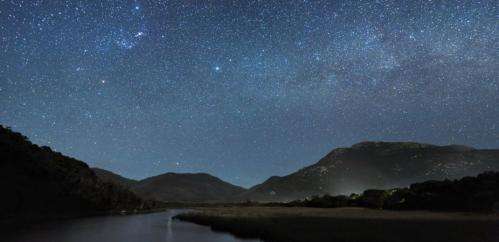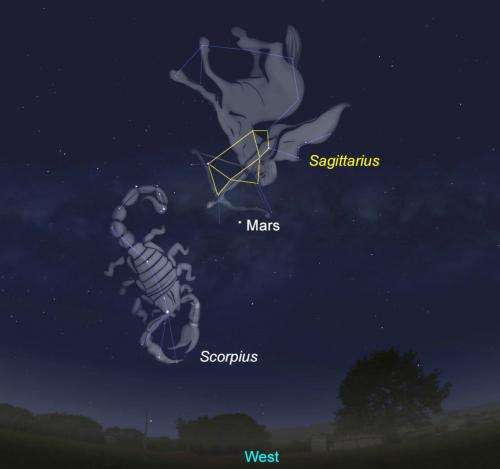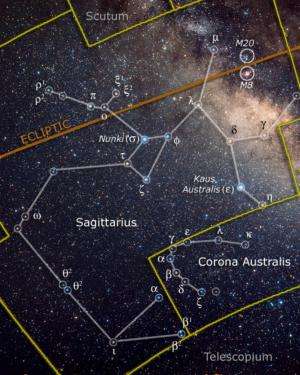The great world wide star count

How many stars can you see at night? Right now people all over the world are being asked to go out and count them!
It's part of a dark-sky awareness campaign that's been held each October for the past seven years. The motivation behind the is to raise awareness of the impact has on the night sky, and also on our health and the environment.
Thankfully you don't have to count every single star you can see. Our target in the southern hemisphere is the constellation of Sagittarius. Its bright stars form the shape of a teapot that can be seen high in the west during the early evening.
From now until Friday October 31, go outside on a clear night about an hour after sunset and find in the west. It'll be above the curving tail of and you'll also see the red planet Mars near the archer's bow and arrow.
The important thing is to spend about 15 minutes or so enjoying the night and waiting for your eyes to become dark adapted. It's surprising how much more you'll be able to see after that time.
When you're ready, compare your view to one of seven provided by the campaign. Magnitude relates to a star's brightness and each chart plots all the stars you will see, down to a limiting magnitude.
If you have a lovely dark view of the night sky, then you'll see the maximum number of stars possible. That means, even the faintest stars with magnitudes of around 6 will be visible. (Note that work in reverse, so the fainter the star, the higher the magnitude.)

I'm certainly a big believer that the starry night sky is an important part of our natural world. Within some of the biggest cities around the world it's only possible to see the brightest stars, which means that at any time of the year only a dozen or so stars might be visible.
The was founded in 1988 to help protect our view of the night sky. They do a lot of work, promoting and educating people on the best solutions for outdoor lighting.
One of the initiatives that I really love, is their recognition of . These parks and reserves are identified by their pristine skies and the aim is to protect them and keep the night filled with stars.

Within Australia, some local amateur astronomical societies are working to increase awareness and advocate for better lighting in our cities. This includes the and the Astronomical Society of Victoria's .
So have a go at recording how dark the sky is from your own backyard. Make sure to and it's also possible to make your measurements more than once. You can repeat the observation on another night to see how much the sky brightness might vary or go to another location, near or far.
At any rate, it's a good excuse to look up at the night sky. And perhaps there's to help minimise light pollution in your local area.
Source: The Conversation
This story is published courtesy of (under Creative Commons-Attribution/No derivatives).
![]()





















